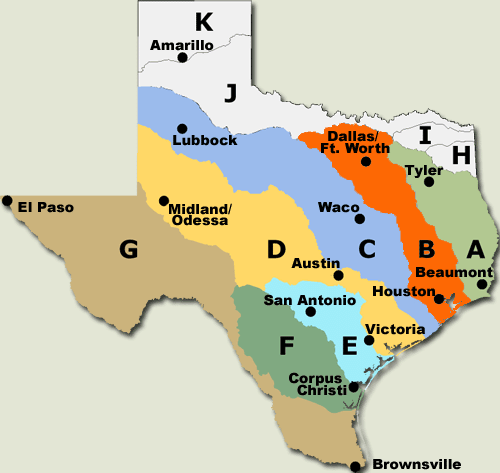|
| Home | | About Us | | Water Planning | |
Groundwater | |
Conservation | |
Environmental Flows | |
Drought Mgmt. | |
Resources | |
Search | | ||
|
The Environmental Flows Allocation Process New process examines how much water is necessary to keep Texas rivers healthy and explores ways to protect water for the environment Updated October 4, 2010 Water is the lifeblood of our Texas landscapes. Unfortunately, it is possible to take too much water out of a river or alter a river's natural flows too much. Texas' rapid population growth means the demands on our rivers will increase and put the health of our rivers and coastal bays at risk.The new Environmental Flows Allocation Process attempts to address two key issues: how much water is needed to keep the state's rivers and coastal estuaries healthy, and how to ensure that water is protected. The process was created by Article 1 of Senate Bill 3 passed in 2007. About the Process In recognition of the unique nature of each of Texas' river basins, the legislation divided the state into eleven regions. A staggered timeline has been set for each of the seven river basins that feed into Texas' major coastal estuaries.
How it works The law creates a public process for soliciting input from scientists and stakeholders. Each area of the state has a Stakeholder Committee made up of people from diverse interest groups and an Expert Science Team made up solely of technical experts. The Texas Commission on Environmental Quality considers reports from both groups and then adopts legal standards for each river and bay system. Each Bay/Basin Expert Science Team (BBEST) has a year to examine the available science and develop a recommended flow regime. The Expert Science Team is to use its best professional judgment in creating their recommendations and should work on a consensus basis. Read more about the Expert Science Teams here. Each Bay/Basin Stakeholder Committee (BBASC) considers their Science Team's recommended environmental flow regime, adds their associated policy considerations, and develops strategies to meet the flow recommendations. The Stakeholder Committee is also to work on a consensus basis. The implementation strategies for protecting flows could include options such as efficiency incentives, the dedication of treated wastewater, and the purchase or donation of existing water rights. The Stakeholder Committee periodically reviews their analyses and recommendations in light of any new scientific information. Read more about the Stakeholder Committees here. The Texas Commission on Environmental Quality (TCEQ), through a public rulemaking process, has one year to use the Science Team and Stakeholder Committee recommendations to legally adopt environmental flow standards-state requirements for flows in the river basin and inflows to the associated bay system. When adopting the flow standards, TCEQ can also "set-aside" some of the water that is not already spoken for by existing permits. The Environmental Flows Advisory Group (EFAG) appoints members to all the Stakeholder Committees and the statewide Science Advisory Committee. In addition to interacting with these committees, this group may submit comments to TCEQ about the various flows recommendations. The Environmental Flows Advisory Group is made up of three state senators, three state representatives, and one representative each from the Texas Commission on Environmental Quality, the Texas Department of Parks and Wildlife, and the Texas Water Development Board. The Science Advisory Committee (SAC) helps provide overall direction, coordination, and consistent application of scientific principles throughout the Environmental Flows Allocation Process. Through a liaison member, they work with each Bay/Basin Expert Science Team. This is a nine-member committee that was appointed by the Environmental Flows Advisory Group. The Environmental Flows Advisory Group appoints members to the Stakeholder Committees, and the Stakeholder Committees will create their area's Expert Science Team. Additional Resources
|
|
||||||||||||||||||||||||||||||||


 Environmental
Environmental
